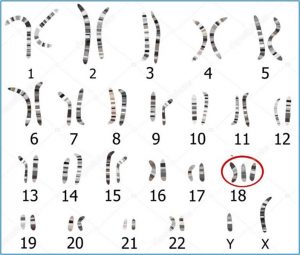Your patient’s NIPT result suggests the presence of an extra copy of chromosome 13. NIPT is a screening test; false positives, though rare, can occur. The actual chance for the pregnancy to have trisomy 13 depends on many factors, including the patient’s clinical and family history.
Next steps to consider: You should discuss the results and the potential clinical implications with your patient. The American College of Obstetricians and Gynecologists and the Society for Maternal-Fetal Medicine state, “All women with a positive cell-free DNA test result should have further detailed counseling and testing and should have a diagnostic procedure before any irreversible action is taken.” Confirmation prior to birth can also help with pregnancy and neonatal management.
What is Trisomy 13?
Trisomy 13 is a condition that is caused by an extra chromosome number 13 (three copies instead of two).
What are the features of trisomy 13?
Although the majority of pregnancies with trisomy 13 result in miscarriage or stillbirth, trisomy 13 can result in livebirth. Individuals with trisomy 13 have severe intellectual disability and abnormalities involving multiple organs. Some of the common features of trisomy 13 include: heart defects, omphalocele, brain abnormalities such as holoprosencephaly, cleft lip and palate, and other features. Although less than 10% of babies with trisomy 13 will live past 1 year of age, some people with this condition can live years or even decades.
What is the prevalence of this condition?
Trisomy 13 occurs in approximately 1 in 12,000 live births. This condition usually happens by chance and is associated with increased maternal age.
What testing could be considered?
- Specialized genetic tests such as karyotyping, fluorescence in situ hybridization (FISH), qPCR, and microarray are available to confirm the presence of trisomy 13.
- These confirmatory tests are generally performed on cells from chorionic villus sampling (CVS) or amniocentesis during pregnancy, on cord blood or peripheral blood sample after the baby is born, or on products of conception (POC) in the case of miscarriage.
- Ultrasound evaluation may be useful in aiding with a prenatal diagnosis of trisomy 13, but a normal ultrasound cannot exclude this condition.

